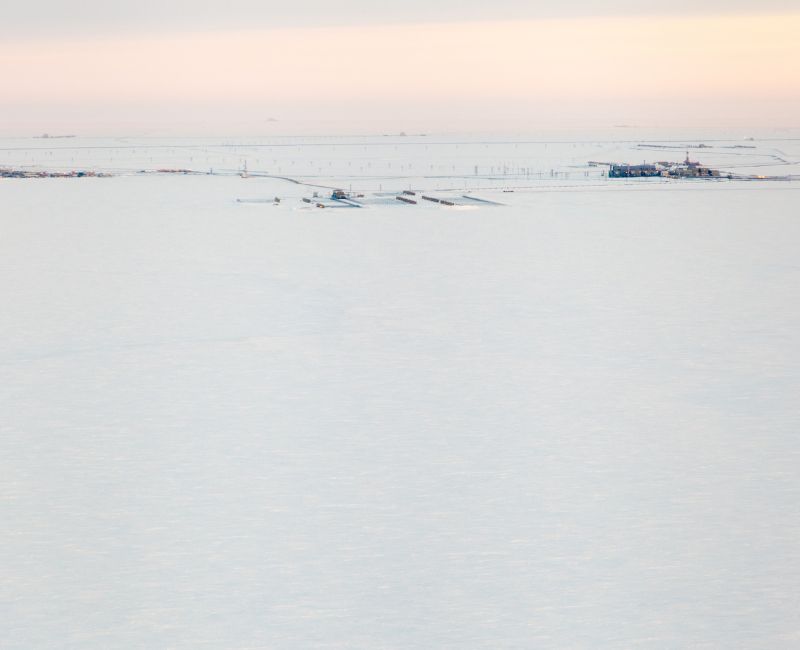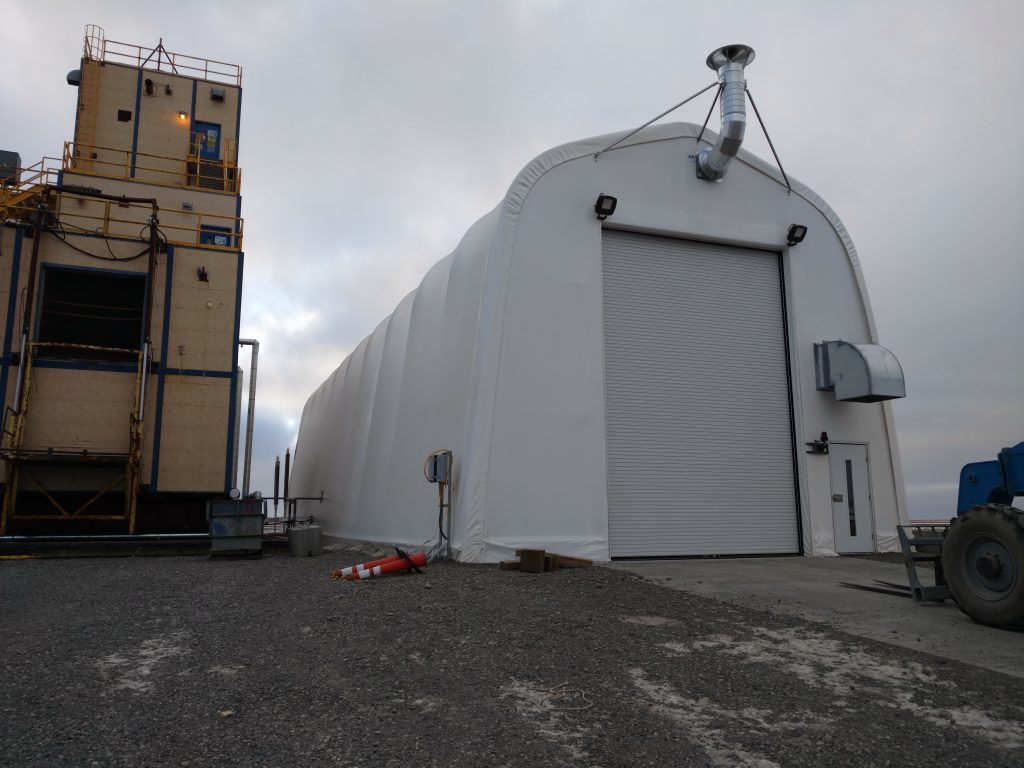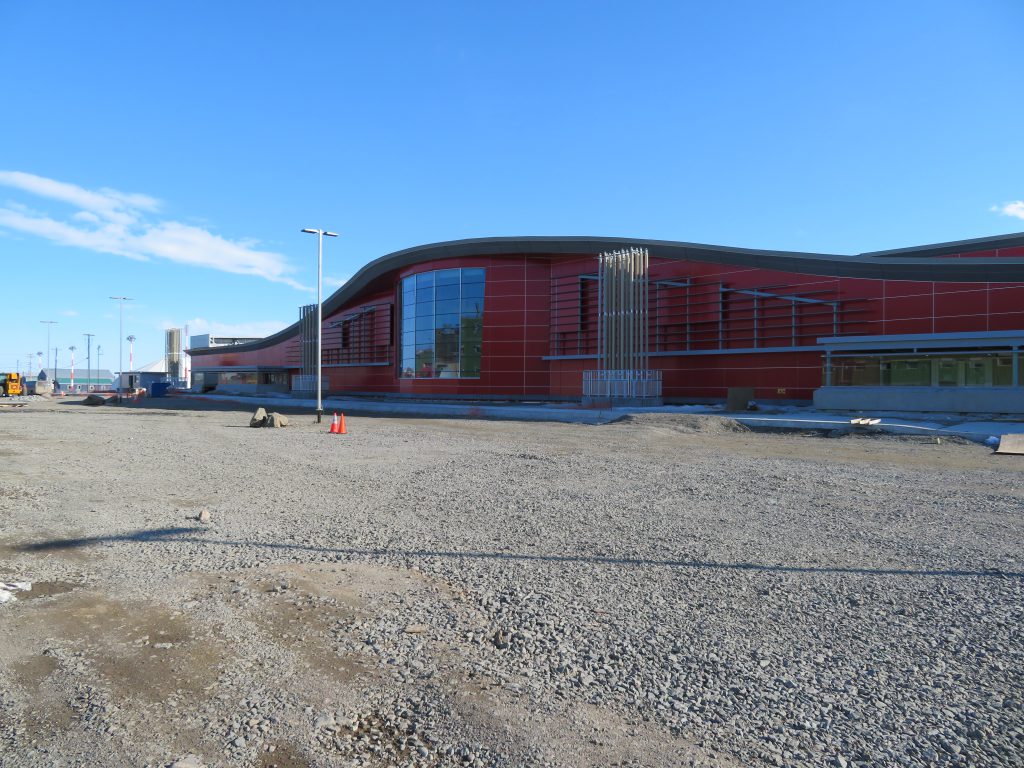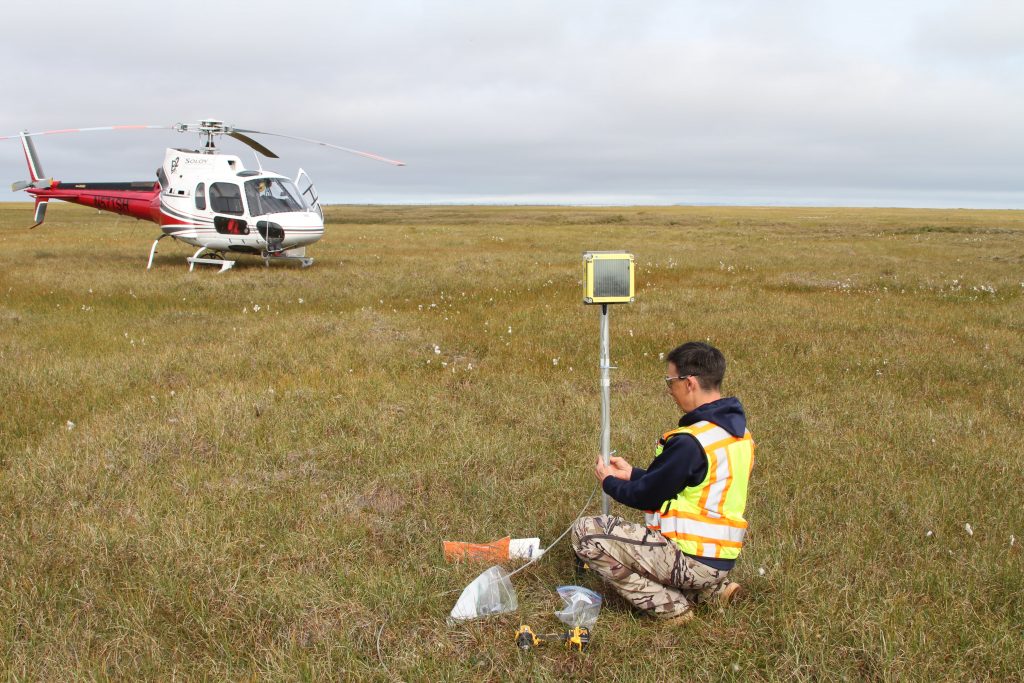🇺🇸 Warmer Horizons: beadedstream’s Temperature Monitoring Solutions for Arctic Resilience
Press release from beadedstream

The North Slope is currently grappling with an unprecedented warm winter, a stark departure from its typical frigid conditions (Dalby, 2023). Similarly, other Northern communities in Canada, such as Yellowknife, Resolute Bay, Gjoa Haven, and several Yukon communities, are experiencing warmer winters, with Yellowknife recently recording its second-warmest fall on record (Holmes, 2023). This unseasonable warmth poses profound challenges to crucial industries, underscoring the critical role of temperature monitoring in Arctic regions. Industries such as oil and gas, infrastructure development, and environmental monitoring heavily rely on precise temperature data for operational efficiency, safety, and strategic planning. In the face of climate dynamics altering traditional expectations, real-time temperature monitoring emerges as an indispensable tool for navigating the complexities brought about by warmer winters. This blog aims to delve into the multifaceted impacts of the ongoing warm spell on Arctic industries and sheds light on the pivotal importance of advanced temperature monitoring solutions.
Impact of Warm Winters in the Arctic Regions
Oil and Gas Operations
Warm winters in the Arctic have significant repercussions on drilling, production, and infrastructure for oil and gas operations. The milder temperatures can impede the efficiency of operations as traditional methods designed for colder climates may become less effective. For instance, the stability of ice roads crucial for transportation of heavy equipment and supplies may be compromised, leading to logistical challenges. Additionally, warmer conditions can affect the integrity of permafrost, on which many Arctic structures rely for stability. This thawing can result in subsidence and ground movement, posing risks to infrastructure like pipelines and drilling pads. Furthermore, the shortened ice cover duration hampers ice roads and ice bridges, making it difficult for operators to access remote locations for exploration and extraction.

Advanced temperature monitoring technology plays a pivotal role in addressing the challenges posed by warm winters in the Arctic for oil and gas operations. One compelling project involves real-time monitoring of tundra temperatures to facilitate ice road operations in Alaska’s North Slope oil fields. beadedstream Ice Road Monitoring Stations, strategically placed along the ice roads, enables operations teams to proactively understand current conditions, forecast the ice road opening window, and prepare for mobilization, ultimately minimizing delays and standby costs. By monitoring tundra temperatures in real-time and forecasting when the ground reaches the required frozen depth, operators using the beadedstream system gain a crucial advantage, allowing them to access the tundra up to 1 to 1.5 months sooner than general opening dates and maximizing their operational window despite the challenges of warming conditions.
Another notable project involves the design of a subgrade wash pit at a grind and inject facility in Alaska. beadedstream’s temperature monitoring technology is incorporated to confirm the effectiveness of insulation layers and thermosyphons in the foundation. By installing Digital Temperature Cables (DTCs) connected to telemetry-enabled Data Loggers, the system monitors temperatures over time, providing insights into the performance of the passive cooling system. This proactive approach allows for timely maintenance and cost savings, preventing potential issues such as differential settlement due to permafrost thaw.
Infrastructure Projects
The warming trend in Arctic winters introduces a transformative dynamic for infrastructure projects in the region. As temperatures rise, the stability and construction processes of Arctic infrastructure face significant impacts. Thawing ground conditions and altered freeze-thaw cycles necessitate a careful reevaluation of construction techniques and materials to ensure lasting stability. Accurate temperature data becomes paramount for project planning and execution, guiding engineers and planners in adapting to the evolving environmental conditions. The importance of precision in temperature monitoring is underscored as it not only influences the immediate construction phase but also determines the long-term resilience and functionality of Arctic infrastructure in the face of unprecedented climatic shifts.
In response to these challenges, beadedstream’s temperature monitoring technology emerges as a crucial ally for Arctic infrastructure projects. In the replacement of the Oksrukuyik Creek Bridge in the North Slope of Alaska, for example, a specialized ad-freeze pile design was required to address the demands of permafrost soil and thermal influences. beadedstream provided a customized temperature monitoring package, deploying digital thermistor strings and satellite data loggers to ensure the stability of the foundation design by allowing the engineers to use the observational method to measure its performance. This remote data collection methodology not only eliminated the need for physical site visits, saving time and resources but also enhanced the safety of staff in remote locations, ensuring a secure working environment.
In another case study at Iqaluit Airport in Nunavut, Canada, where permafrost thaw could lead to damaging differential settlement, beadedstream’s technology played a critical role in monitoring thermosyphons installed under the new terminal and services buildings. Digital thermistor chains and direct-to-orbit data loggers were supplied to monitor the performance of thermosyphons in real-time during the airport’s construction and operation. This comprehensive monitoring system allowed stakeholders, including contractors, engineering consultants, and the airport authority, remote access to crucial data. The application of beadedstream’s technology not ensured the resilience of critical infrastructure in the face of climate change and demonstrated the efficacy and reliability of the technology in harsh and remote environments.
Environmental Monitoring and Research
The influence of warm winters on Arctic permafrost and ecosystems reverberates through the tapestry of environmental monitoring and research. As temperatures rise and precipitation patterns change, the once stable permafrost undergoes shifts with potential far-reaching consequences for the delicate balance of Arctic ecosystems. Ongoing research endeavors face the urgent task of understanding these dynamic changes and their implications for environmental conservation. The interconnectedness of Arctic ecosystems and the delicate equilibrium they maintain underscore the critical role of accurate temperature data. In this context, real-time temperature monitoring emerges as an invaluable tool, enabling researchers to glean insights into the evolving landscape, contribute to conservation efforts, and foster a deeper understanding of the intricate relationship between the Arctic’s environmental dynamics and the impact of unseasonably warm winters.
In Alaska’s North Slope, where the impact of climate change on Arctic lakes is under investigation, beadedstream has delivered a customized real-time monitoring solution. For the Arctic Lake Ice Systems Science (ALISS) Project, beadedstream designed a low-footprint Arctic lake buoy with a data logger and temperature sensors, providing crucial insights into evolving lake dynamics. This innovative solution stands as an alternative to traditional methods, mitigating the risk of data loss and offering a robust and reliable tool for researchers in challenging Arctic environments.
Meanwhile, in the Cook Inlet watershed, where salmon streams are vital resources threatened by climate change, Cook Inletkeeper and US Fish & Wildlife leverage beadedstream’s remote river temperature monitoring systems. Since 2013, these systems have provided real-time data on over twenty (20) rivers, aiding in understanding the impact of summer temperature changes on salmon runs. The comprehensive monitoring stations, equipped with beadedstream’s D505 Data Logger, digital temperature cables, and air temperature sensors, offer a reliable and low-maintenance solution. By facilitating remote access to data, beadedstream’s technology enables informed decision-making and public awareness in the face of changing climate conditions.
The Role of Remote Temperature Monitoring
In the face of ever-changing Arctic conditions, the demand for up-to-the-minute temperature information is paramount. Real-time data becomes a linchpin for decision-making in dynamic scenarios, where minute variations in temperature can have profound effects on operational efficiency and environmental conditions. Whether it’s ensuring the safety of personnel, optimizing equipment performance, or adapting construction plans based on immediate weather shifts, the critical need for real-time data is evident. While more is known about air temperature rises due to the presence of meteorological stations in communities, industrial sites and research centers, connecting its impact on ground temperatures requires real-time monitoring in the ground to observe the changes.
In the unforgiving Arctic environments, remote accessibility poses a unique set of challenges. Traditional monitoring methods may falter in the face of extreme conditions and remote locations. Remote temperature monitoring, however, transcends these challenges, providing a solution that can be accessed from virtually anywhere. This accessibility not only enhances the efficiency of operations but also enables early detection of potential risks. Continuous monitoring acts as a proactive measure, allowing for swift responses to temperature fluctuations, equipment malfunctions, or environmental changes. By mitigating risks through early detection, remote monitoring proves instrumental in safeguarding personnel, equipment, and the overall success of Arctic projects.
Conclusion
The profound impacts of warm winters on the Arctic underscore the critical importance of real-time temperature monitoring across diverse industries. The oil and gas sector grapples with logistical and operational challenges, infrastructure projects demand meticulous planning to ensure stability, and environmental research seeks to comprehend the evolving dynamics of fragile ecosystems. Throughout these endeavors, beadedstream’s temperature monitoring technology provides industry professionals and researchers with indispensable insights to navigate the complexities brought about by climate change.
In the ever-evolving landscape of Arctic challenges, beadedstream has consistently stood as a reliable partner, offering extensive experience in supporting the oil and gas, infrastructure, and environmental industries. With a track record of contributing to various projects in the Arctic, beadedstream’s digital temperature cables, data loggers, and real-time data dashboard have become integral components in ensuring project success. From the frigid expanses of oil and gas operations to the intricate requirements of infrastructure development and environmental research, beadedstream remains at the forefront of innovation. Tailoring solutions based on the unique needs of each project, beadedstream continues to play a vital role in the resilience and adaptability of these industries in the face of changing Arctic climates. If interested in exploring how beadedstream can enhance your project, please feel free to reach out to us at co*****@be**********.com.
Originally published on 19 December by beadedstream.
Announcements are published as a service to readers. The sender is responsible for all content.
Announcements for publication can be submitted to pr***********@ar**************.com.



